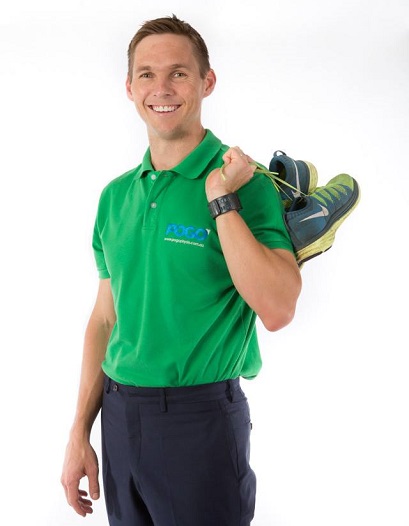Welcoming 2nu, the official sunglasses of the Gold Coast Marathon presented by ASICS
2nu joins the Gold Coast Marathon presented by ASICS as the official sunglasses.
By Brad Beer
In practice, I’m regularly asked how often hip strength and stability exercises should be completed.
The regularity with which you complete hip strength exercises for your running will depend on four factors. They are:

If you have relatively weak hip stability muscles I recommend that you complete strength exercises daily, if possible.
Daily completion of the exercises will allow you to progress through the stages of muscle activation, strength and endurance in the shortest amount of time. I have observed significant activation and early strength gains being made by runners in as little as two to three weeks. Developing greater strength and endurance of the hip stability muscles tends to occur between three and six weeks.
I often give runners a two-week challenge to improve their hip stability when they have sub-par scores on testing. After two weeks, the frequency of completing these exercises can often be reduced to three to four times per week, providing appropriate scores are achieved at the time of retesting.

If you are injured or recovering from injury, daily completion of hip strengthening exercises is ideal. This will assist with building early momentum in your rehabilitation.
Given that most running injuries are a result of hip stability deficits, anything less than daily completion will only delay rehabilitation and a return to normal running. Once the injury is under control, the frequency may shift from daily back to several times per week.

Just as a rehabilitating runner needs to complete hip stability exercises daily, so too will a runner in heavy training. Quite simply, the further you intend to run, the more frequently you should aim to complete hip strengthening exercises.
Heavy training may incorporate higher intensity training sessions, or greater weekly running volume. Either way, the runner in heavy training is wise to increase the frequency of their hip stability exercises in order to keep pace with the greater demands being placed on their body.
For example, a runner aiming to complete an upcoming marathon should aim for daily completion of these exercises, whereas a runner aiming to complete a 5 or 10 kilometre event may complete the exercises two to three times per week.

The more motivated you are, the more likely you will complete these exercises. Simple. A maxim that I regularly share in practice with my clients is that when it comes to hip stability exercises ‘consistency beats frequency’. What I mean by this is, it is of little benefit for a runner to be initially enthused about completing their hip stability exercises, only to then not follow through beyond one or two weeks of frequent completion.
For more information read my 4 Must Know Runner’s Strength Exercises and watch other running strength exercises on the POGO Physio YouTube channel.
All the best with your training,
Brad Beer
Physiotherapist, Founder POGO Physio, Author You CAN Run Pain Free!

Brad Beer is a Gold Coast based physiotherapist who throughout his career has delivered in excess of 25,000 physiotherapy consultations. In 2006, Brad founded a physiotherapy group called POGO Physio which, since inception, has treated over 16,000 people.
Recognised as a leading authority on running injury prevention and rehabilitation, Brad himself is an avid runner and is passionate about seeing people unlock their true running potential.
Brad believes that all runners can and should experience pain and injury free running. In 2015 Brad released his first book You CAN Run Pain Free! A Physio’s 5 Steps to Enjoying Injury Free and Faster Running to educate runners that it is indeed possible to enjoy the many benefits of pain free running. Brad’s clients include age group, novice, beginner, and elite athletes. Brad has assisted his clients in winning multiple Australian, world, and even Olympic medals.
Follow Brad’s running advice online:
POGO Physio | pogophysio.com.au
Website | bradbeer.com.au
Twitter | @Brad_Beer
Instagram | @Brad_Beer
RUNNERS. TAG YOUR PHOTOS WITH #GCM24